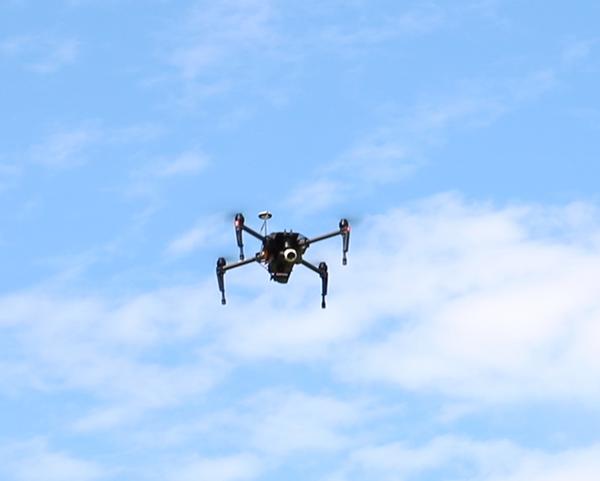
February Is a Great Time to Prune Blueberries!
Blueberries are a popular crop for commercial farmers as well as home gardeners in North Carolina. They are fairly …



El inglés es el idioma de control de esta página. En la medida en que haya algún conflicto entre la traducción al inglés y la traducción, el inglés prevalece.
Al hacer clic en el enlace de traducción se activa un servicio de traducción gratuito para convertir la página al español. Al igual que con cualquier traducción por Internet, la conversión no es sensible al contexto y puede que no traduzca el texto en su significado original. NC State Extension no garantiza la exactitud del texto traducido. Por favor, tenga en cuenta que algunas aplicaciones y/o servicios pueden no funcionar como se espera cuando se traducen.
Inglês é o idioma de controle desta página. Na medida que haja algum conflito entre o texto original em Inglês e a tradução, o Inglês prevalece.
Ao clicar no link de tradução, um serviço gratuito de tradução será ativado para converter a página para o Português. Como em qualquer tradução pela internet, a conversão não é sensivel ao contexto e pode não ocorrer a tradução para o significado orginal. O serviço de Extensão da Carolina do Norte (NC State Extension) não garante a exatidão do texto traduzido. Por favor, observe que algumas funções ou serviços podem não funcionar como esperado após a tradução.
English is the controlling language of this page. To the extent there is any conflict between the English text and the translation, English controls.
Clicking on the translation link activates a free translation service to convert the page to Spanish. As with any Internet translation, the conversion is not context-sensitive and may not translate the text to its original meaning. NC State Extension does not guarantee the accuracy of the translated text. Please note that some applications and/or services may not function as expected when translated.
Collapse ▲
Blueberries are a popular crop for commercial farmers as well as home gardeners in North Carolina. They are fairly …

A FREE Lecture held on Thursday, March 9 from 6:30 – 8:00p.m. Location: Macon Extension Center at 193 Thomas Heights …

Join the NC Peach Growers’ Society for the 2023 Annual Meeting on Tuesday, January 24, at the N.C. Cooperative …

Be prepared for the upcoming 2022 Christmas Freeze in collaboration with AWIS Weather Services An upcoming freeze will push cold air from Central …

Christy Bredenkamp, N.C. Cooperative Extension, Macon County Center Director recently hosted a Christmas Tree Production 101 Workshop on December 8th …

The Census of Agriculture is a complete count of U.S. farms and ranches and the people who operate them. …

Several species of “cypress”-type conifers (family Cupressaceae) are widely planted in North Carolina landscapes. Among the most common are …

The Macon County Nickels for Know-How Referendum will be held on Thursday, November 17, 2022. The polling site will be …

Thanks to the Farm Pathways grant from the USDA Beginning Farmers and Ranchers Development Program, NC FarmLink is excited …

The recently released USDA Land Values 2022 Summary report shows an overall 8.4% increase in average NC farmland value to …

Are you looking for up to date information on your latest Agriculture endeavors? Join resource partner, EmPOWERing Mountain Food …

Do you have pesticides at your home, business or farm that you no longer need or use? If your …

The fungicide spray guides for tomato and pepper are intended for commercial growers and are suggested products or programs …

It’s time to preregister for the 2022 Southeastern Apple Growers Conference. This year’s meeting will be held January 17-20, …

Note: On June 23, 2022 (6 months after this article was published), the spotted lanternfly was detected in North …

Last Pest Update of 2021 and BMSB Still Reigns! For all practical purposes, brown marmorated stink bug remains the only …

Brown Marmorated Stink Bug: As shown in the chart below, emergence of first generation adults is well underway in …

This factsheet discusses symptoms and control of several leaf diseases common in North Carolina blueberry …

This factsheet describes the biology of the cane lace bug or bamboo lace bug, Leptodictya …

This factsheet describes the biology of the banded sphinx moth or lesser vine sphinx, Eumorpha …

This factsheet describes the biology of the elm-grass root aphid, Tetraneura ulmi, and provides residential …

This publication discusses flying unmanned aerial vehicles (drones, model aircraft) for commercial purposes. You'll learn …

This publication reviews research between the late 2000s and the 2020s to explore trends shaped …

This review presents the key steps involved in pruning a mature Carlos vine for maximum …

This vegetable pathology factsheet describes the identification and treatment of anthracnose of pepper.